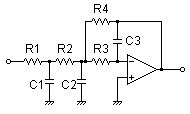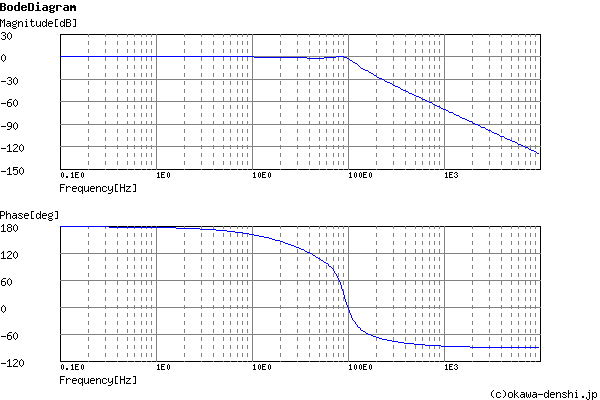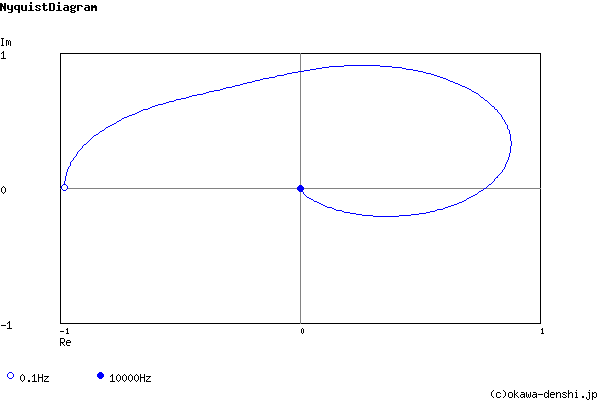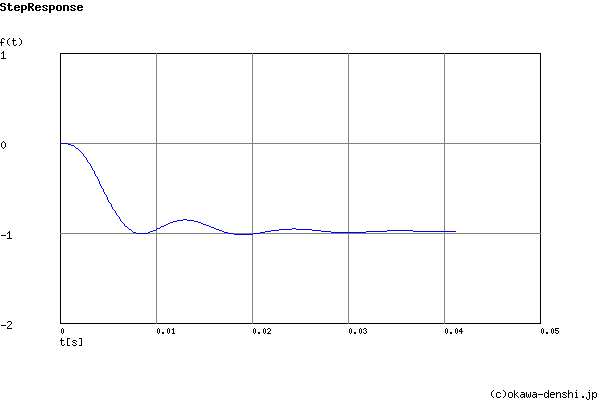(Sample) 3rd order Multiple Feedback Low-pass Filter Design Tool - Result -
Calculated the Transfer Function for the 3rd order Multiple Feedback Low-pass filter, displayed on graphs, showing Bode diagram, Nyquist diagram, Impulse response and Step response.
3rd order Multiple Feedback Filter
| Vi→ |

|
→Vo |
| G(s)= |
-79063161.7478 s3+466.724312356s2+392148.494742s+80593959.1348 |
R1 = 910Ω
R2 = 47kΩ
R3 = 130kΩ
R4 = 47kΩ
C1 = 4.7uF
C2 = 0.22uF
C3 = 0.0022uF
Equivalent block diagram:
| Vi(s)→ | 2πfc1 s+2πfc1 | → | (2πfc2)2 s2+2ζ(2πfc2)s+(2πfc2)2 | →Vo(s) |
Cut-off frequency fc1, fc2 of equivalent block diagram:
fc1 = 37.9811225476[Hz]
fc2 = 92.4905889032[Hz]
Damping ratio ζ of equivalent block diagram:fc2 = 92.4905889032[Hz]
ζ = 0.196238121389
Pole(s)
p = -18.1501794125 +90.6922269158i[Hz]
|p|= 92.4905889032[Hz]
p = -37.9811225476[Hz]
|p|= 37.9811225476[Hz]
p = -18.1501794125-90.6922269158i[Hz]
|p|= 92.4905889032[Hz]
|p|= 92.4905889032[Hz]
p = -37.9811225476[Hz]
|p|= 37.9811225476[Hz]
p = -18.1501794125-90.6922269158i[Hz]
|p|= 92.4905889032[Hz]
Phase margin
pm= 214[deg] (f =89[Hz])
Oscillation frequency
f = 90.6922269158[Hz]
Overshoot (in absolute value)
The 1st peak gpk = -1.01 (t =0.0085[sec])
The 2nd peak gpk = -0.85 (t =0.013[sec])
The 3rd peak gpk = -1.02 (t =0.019[sec])
The 2nd peak gpk = -0.85 (t =0.013[sec])
The 3rd peak gpk = -1.02 (t =0.019[sec])
Final value of the step response (on the condition that the system converged when t goes to infinity)
g(∞) = -0.981006053016
Frequency analysis


Transient analysis
